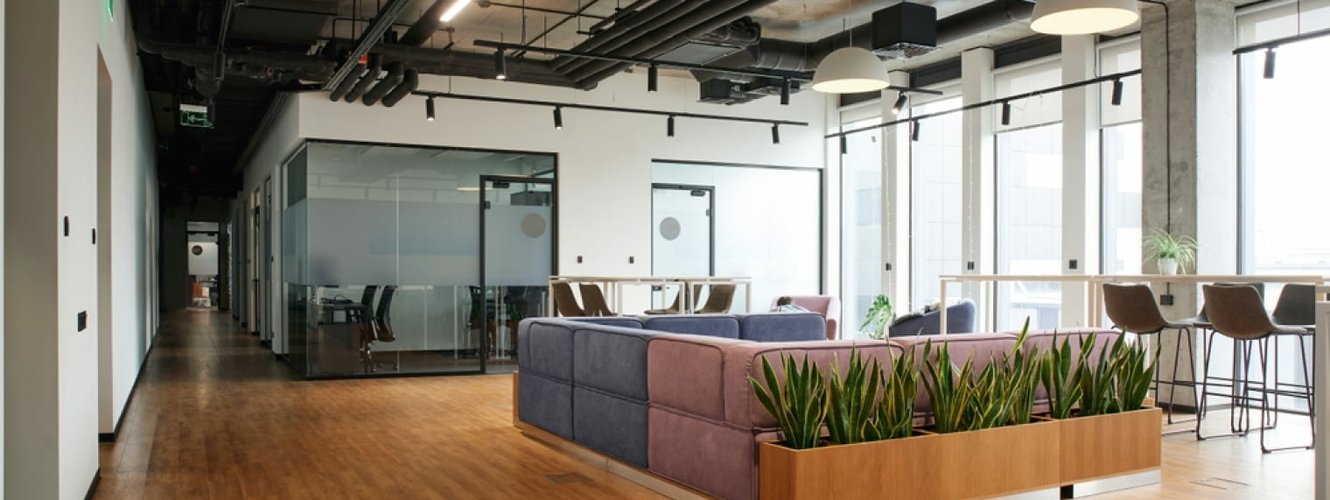Businesses have incredible power to affect the wellbeing of its employees and to make a positive impact on the environment but without a framework in which to improve and be held accountable, companies can be rudderless in their efforts.
ESG in the workplace is growing in relevance as it helps businesses to make better decisions by clearly defining areas in which they can improve. If your big question is ‘what is ESG in the workplace?’, keep reading as we’re going to explain what an ESG office looks like and how to embed ESG in the workplace.
What Is ESG in the Workplace?
You can only create an ESG office when you know what’s involved and how the objectives can be achieved. Our guide to ESG in the workplace will give you all the background information you’ll need.
Definition and Workplace Relevance
ESG stands for Environmental, Social and Governance, and it addresses how a company approaches sustainability, staff wellbeing and social impact via better decision making. ESG is already widely applied on a corporate level in a way that usually involves external factors. In practice, this could be choosing to only work with companies who are B Corp Certified or not investing in brands who have links to fossil fuels.
Now ESG in the workplace is growing in prominence, as employees, stakeholders and potential business partners increasingly want to align with a holistic suite of sustainable and ethical principles. ESG in the workplace is a great way for companies to hold themselves accountable in respect of improving working environments for its workforce and enhancing its reputation.
Office design, culture and operations form the backbone of the ESG office, and the principles can be divided into three key areas:
- Environmental: how much carbon and pollution an office creates, a business’s attitude to recycling and waste, and approaches to energy/resource usage.
- Social: achieving a good work-life balance and improving employee wellbeing via inclusivity, equality and diversity, plus creating an environment that retains the workforce and attracts new talent.
- Governance: bettering levels of engagement with staff on social and sustainability matters, and instilling confidence that ethical decisions are being made at higher levels.
What Is an ESG Office?
Are you working in an outdated or an ESG office? Let’s find out.
Meaning and Characteristics
A true ESG-compliant or ESG-aligned office requires everyone at every level to be considering their environmental and social actions. ESG in the workplace requires a mind shift for the very best outcomes. For example, a workplace should be working towards reducing its carbon footprint, accommodating physical and mental health impairments, publishing its sustainability goals and collaborating with likeminded businesses.
How does that look in practice? Those involved with an ESG office – especially owners, facilities managers and procurement specialists – will work within a strict framework. They’ll pay particular attention to the credentials of energy, goods and service suppliers, choosing those who prioritise sustainability.
Environmental Practices in Office Design
How an office is designed and functions plays a crucial role in ESG in the workplace.
Reducing Environmental Impact
The careful planning of office relocations, renovations and refits will help businesses reach their ESG office goals. Sustainability and staff welfare can be prioritised at every step. MPL, for example, would pay particular attention to the following when planning an ESG office:
- Use of recycled materials: meticulous research conducted when buying off-the shelf furniture, specifying floorcoverings, and when commissioning bespoke fixtures and fittings.
- Energy-saving systems: specifying motion sensors for lighting, taps and entrance doors, installing A-rated kitchen appliances and only using LED light bulbs.
- Access to natural light: smart space planning and desk positioning to ensure natural light is maximised. This is essential for our circadian rhythm, which regulates various physical, mental and behavioural patterns.
- Heating & air quality: installing the most energy-efficient HVAC (heating, ventilation and air conditioning) systems, paying attention to optimum working temperatures, air quality and the ability to control different zones independently. Additionally, implementing a biophilic design to enhance air purification and staff wellbeing.
- Green certifications: choosing suppliers who themselves are BREEAM, LEED or SKA accredited, or who have worked to deliver sustainable workplaces within these accreditation frameworks.
- Habit-making: including office features that make it easier for staff to be sustainable, such as recycling points and cycle racks.
Social Responsibility in the Workplace
Inclusivity is integral to the ESG office, with advance planning and considered design ensuring equal opportunities and a comfortable working environment.
Inclusive and Ethical Office Environments
Accessibility and inclusivity is integral to ESG in the workplace, with the best working environment enhancing wellbeing, improving mood and increasing productivity.
When working with MPL, we will ensure full compliance with the Equality Act 2010, incorporate welcoming spaces for neurodiverse workers, ensure there are different environments for a variety of working styles and control office acoustics for improved audio comfort. An ESG office may also include break-out areas that encourage downtime, quiet/prayer rooms, gender-neutral facilities and ergonomic furniture.
The above will ensure companies are inclusive during the entire employment journey, from fair hiring practices through to career growth.
Governance in Office Operations
Companies should never underestimate how leading by example can affect and influence the workforce.
Transparent, Responsible Practices
Change comes from the top down and in an ESG office, those in the most senior roles will have to uphold ESG principles. Employees respond best when then feel their superiors are working towards the same sustainability outcomes, are being transparent about their business operations and behaviour, and making sustainable decisions on behalf of the workforce.
A good start is publishing any ESG office goals, together with how they will be achieved and how success will be measured. Progress should always be shared with the entire company as it helps keep people invested and motivated.
Don’t forget to detail:
- How those in supply chains are sourced and vetted
- How the business complies with ethical labour practices
- How the business protects the rights of employees
- How the business presents fair and equal opportunities
- Data protection policies
- Health and safety policies
Benefits of ESG in the Workplace
There is no doubt that ESG in the workplace is an environmental movement with sustainability at its heart. But as well as having a global impact, an ESG office will undoubtedly create a better working environment for everyone.
Why ESG Is Good for Business
- Improves employee engagement: people are more likely to be loyal to and work hard for businesses who place positive environmental impact on a par with profit.
- Boosts workplace comfort: employees will reward you with better efficiency and less sick days when their working environment meets their needs.
- Attracts new talent: new hires are increasingly looking to align themselves with companies who share their environmental and social justice beliefs.
- Creates a successful profile: don’t forget, potential business partners will be profiling your company to assess your suitability. An ESG office with robust, transparent values will rank highly.
- Saves money: a wonderful byproduct of investing in an energy efficient workplace is a lower operational cost.
- Futureproofs: a focus now on ESG in the workplace will help you meet incoming compliance and regulations.
How to Create an ESG Office
Not sure where to start when creating an ESG office? Follow these steps and you’ll find yourself on the right path.
Steps for Business Owners
- Audit your current office setup and operational policies: understand how much energy and water your business uses, commission a carbon output audit and monitor waste – especially components that can’t be recycled.
- Consult with ESG or sustainability experts: seek professional advice on ways to improve your environmental and wellbeing performance.
- Integrate ESG objectives into your office design and refurbishment: consult with MPL on the future of your office design, with ESG principles at its core.
- Provide staff training and set measurable goals: communicate ESG office intentions to the entire workforce, invite collaboration and track achievements using KPIs.
- Consider certifications or benchmarks to demonstrate ESG commitment: ensure the efforts of your workforce and third-party suppliers are rewarded. Accreditations to consider include B Corp Certification, ISO 14001, Green Mark, BREEAM, LEED, SKA, plus schemes run by the Carbon Trust Standard and Investors in the Environment. You may also like to consider Mental Health First Aid Instructor Training or signing up to the Workplace Wellbeing Charter.
The ESG office has so many plus points that it’s hard to ignore. Kinder to the environment, cost-effect to run, healthier for occupants, more inclusive and welcoming, and attractive to collaborators. MPL can plan z refit if your goal is improved ESG in the workplace.













